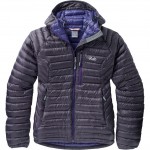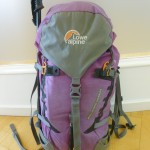Packing for a walking holiday can be hectic enough, without having to factor in the cultural and practical differences that travelling to some countries entails. Here’s a wee list to make your preparations slightly easier!
1. Kitbag
Because porters will be carrying your main bag whilst you are trekking, it is important that it is a kitbag, as opposed to a hard square suitcase on wheels, or a huge ‘backpacking’ type rucksack. The porters need to be able to fit your bag in their own specially fashioned baskets – thus a kitbag is a must have. For both regions there is a weight limit of 15kg, make sure you are taking no more than this.
2. Water bottle
Nepali tap water is not suitable to drink. This has led to many trekkers buying plastic bottled water along the routes instead, causing unfortunate waste and rubbish. Instead take a Sigg or Nalgene bottle with you and ask your lodge if they can fill it with boiled water – much more economical, better for the environment and just as safe!
3. Money bag
This is mainly for when you are in the cities in Nepal. Unfortunately, as with all major cities, pickpocketing can sometimes be an issue. Wear one of these whilst you are sightseeing and keep your money and cards in it. Upgrade to a bum bag and to keep your camera and phone safe also.
4. Walking poles
Some of the paths, depending on the grade of trek you are going on, can have particularly steep ascents and descents. Walking poles really do make a difference, especially on your ankles and knees.
5. Insulated jacket
It can get really cold in the evenings, especially in higher altitude regions, and even in the late spring and early autumn. Either a down or synthetic insulated jacket is a must have.
6. Camera
How could you leave for any holiday without a camera?!
7. Insect repellent
The south of Nepal (the location of Chitwan National Park and Lumbini) can be particularly bad for the ol’ mosquito. A larger version of the Scottish midge, these pesky blighters hang around lights, especially at dawn and dusk. As a general rule, the warmer it is, the worse they are. The most effective repellents are those with deet in them, but be careful not to get it on any plastic items or on your clothes!
8. Drybags
Very useful for protecting your kit when it’s being transported, especially if it’s going to end up in the back of an open vehicle or being carried by your porter for a long period of time. A sunny day in Nepal can suddenly turn into a downpour if the weather is feeling so inclined, especially in the Monsoon months, and sometimes in September and May. Drybags come in various sizes, and all outdoor shops will sell them.
9. Long walking trousers
It is considered inappropriate to show too much skin in Nepal, especially around temples or other places of religious significance. For men and women knees should not be on show and shoulders should be covered whenever in any sort of public space (this includes on walking trails). Sleeved shirts and long walking trousers are thus essential.
10. Day rucksack
25-35 Litres should do just fine!
There is plenty of choices out there, some people prefer rucksacks with netted backs, some with external pockets and pole holders – it’s really up to you. Fill your bag with items you might need whilst trekking; gloves, fleece, hat, waterproofs, camera, buff, book, and money – all the usual suspects. Have fun! Find out more about Macs Adventure's trekking packages in Nepal by visiting macsadventure.com for some ideas and inspiration.















 Australia
Australia New Zealand
New Zealand South Africa
South Africa European Union
European Union